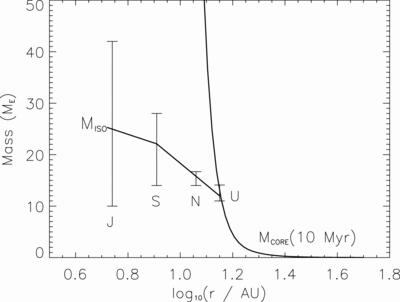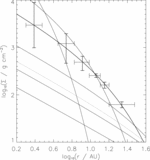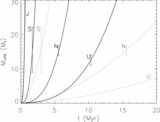Image Details

Caption: Fig. 4.
Final masses of solids in each planet. Assuming that the surface densities of gas and solids remain constant at our inferred values for 10 Myr, growth of a 10 M⊕ core within that time is predicted in each planet’s feeding zone. The line shows the mass of core achieved after 10 Myr. Inside 15 AU, planetary growth is limited not by time constraints but by the availability of mass. The effective isolation mass, Miso, is plotted for each planet’s feeding zone. The vertical bars represent the total amount of solids (﹩M_{Z}﹩) inferred for each planet (including both cores and envelopes). The value of ﹩M_{Z}﹩ for each planet is consistent with the hypothesis that each planet exhausted the solids in its feeding zone during growth, justifying the assumption underlying the MMSN model.
Copyright and Terms & Conditions
© 2007. The American Astronomical Society. All rights reserved. Printed in U.S.A.






